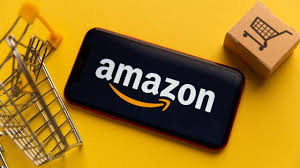When evaluating product demand, competition, and profitability metrics for Amazon FBA, consider the following factors:
- Sales Rank: Examine the Best Sellers Rank (BSR) on Amazon to gauge a product’s popularity and demand. Lower BSR indicates higher sales volume within a category, but keep in mind that different categories have varying sales volumes.
- Customer Reviews: Analyze customer reviews to understand the strengths and weaknesses of competing products. Look for common complaints, product improvements customers desire, and opportunities to offer a superior product.
- Competition Level: Assess the number of sellers offering similar products and their sales performance. Evaluate whether the market is saturated or if there is room for new entrants. High competition might require unique selling propositions or differentiation strategies.
- Pricing Analysis: Analyze the pricing of competing products to determine if there’s room for profit margins. Consider manufacturing or sourcing costs, Amazon FBA fees, shipping costs, and potential selling prices. Ensure that the product’s pricing aligns with customer expectations and market trends.
- Keyword Research: Conduct keyword research to identify relevant and high-volume search terms related to your product. Use tools like Google Keyword Planner or Amazon’s own keyword research tools to understand search volumes and competition for specific keywords. This helps optimize product listings for better visibility.
- Seasonality: Consider whether the product is subject to seasonal demand fluctuations. Evaluate if the product can sustain consistent sales throughout the year or if it’s dependent on specific periods or events. Seasonal products may require additional planning and inventory management.
- Trend Analysis: Assess the long-term viability and sustainability of a product by analyzing its historical and current trend data. Look for products with consistent or growing demand rather than short-lived trends. Tools like Google Trends can provide valuable insights into search volume over time.
- Profit Margins: Calculate your potential profit margins by subtracting all expenses (e.g., product costs, Amazon fees, shipping costs) from the selling price. Ensure that the margins are sufficient to cover expenses and generate a desirable return on investment (ROI).
- Niche Differentiation: Look for product opportunities within specific niches or subcategories. Narrowing down your target audience and differentiating your product can help you stand out from the competition and attract a loyal customer base.
- Niche Selection: Evaluate the potential of a niche by assessing its size, growth potential, and competition. Consider niches with passionate audiences, specialized needs, or underserved markets. A smaller niche can offer better opportunities for differentiation and higher profit margins.
- Profit Margin Analysis: Calculate the potential profitability by estimating costs, including product sourcing, packaging, shipping, and Amazon FBA fees. Determine if the estimated profit margin is sufficient to cover expenses and provide a reasonable return on investment.
- Branding and Differentiation: Assess the potential to differentiate your product through branding, unique features, or value-added services. Look for ways to stand out from the competition and create a compelling value proposition that attracts customers.
- Long-Term Viability: Consider the long-term viability of the product. Evaluate if it’s a fad or trend that might fade quickly or if it has the potential to maintain consistent demand over time. Look for products with evergreen appeal or the ability to adapt to evolving customer preferences.
Remember, product evaluation is an ongoing process. Regularly monitor market trends, competition, and customer feedback to adapt your product selection and marketing strategies accordingly. Continuously analyze and optimize your product portfolio to maximize profitability and maintain a competitive edge on Amazon FBA.
SHARE
